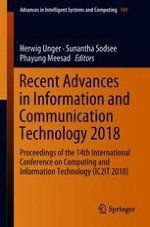This book contains the research contributions presented at the 14th International Conference on Computing and Information Technology (IC2IT 2018) organised by King Mongkut’s University of Technology North Bangkok and its partners, and held in the northern Thai city of Chiang Mai in July 2018. Traditionally, IC2IT 2018 provides a forum for exchange on the state of the art and on expected future developments in its field. Correspondingly, this book contains chapters on topics in data mining, machine learning, natural language processing, image processing, networks and security, software engineering and information technology. With them, the editors want to foster inspiring discussions among colleagues, not only during the conference. It is also intended to contribute to a deeper understanding of the underlying problems as needed to solve them in complex environments and, beneficial for this purpose, to encourage interdisciplinary cooperation.
